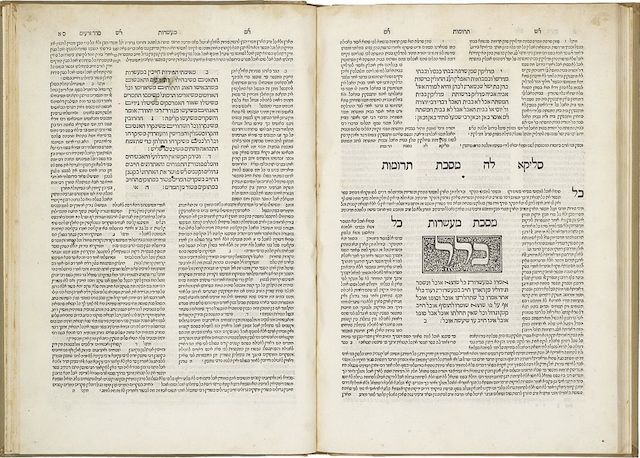
A quick perusal of a page of the Talmud in the original form, the Vilna Shaas, shows multiple commentators surrounding the center text. The center text is the Mishneh and the Gemara. On the one side you have Rashi and on the other side you have Tosafot. You also have Mesorat HaShas, Ein Mishpat, Ner Mitzvah and Rabeinu Chananel. If you check the front page of the Shas, you will discover over 20 commentaries listed.
All of these commentaries can be considered links to the text. This format was in all probability the first forerunner to Tim Berners-Lee concept of Linked Data on the Internet today. The difference is, that in the printed text, the “linked data,”, the meforshim, are not flashing lights and moving up and down to distract you. When the student of the Masechta is ready or has a question, he can refer to the side links to the text. Or he can turn to the back to find an extended Commentary.
The standard Mikraot Gedolot on the Printed Chumosh and the entire Tanach stands in the same relationship. Multiple commentaries around the text, ready to help and fill in lacunae in the reader’s understanding of the text, when he needs to refer to them. But again, no blinking lights, no figures moving up and down, to distract him from his main task, which is to learn the text.
Finally, it should be noted that Psychologists have specifically pin-pointed movement as that factor in our vision which distracts us and catches our attention. It is that built-in mechanism, originally meant for accurate perception of the environment, which modern programmers and advertisers use to distract us from the task at hand as we “Surf the Net”.
Click here for Tim Berners-Lee at the Ted Conference 2008:

